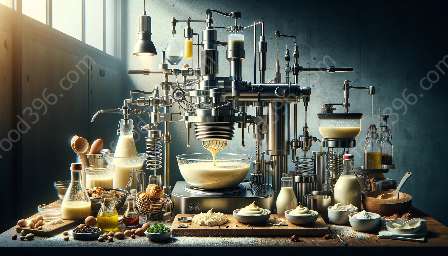When it comes to food preparation, the concept of foaming plays a vital role in creating unique textures and enhancing flavors. This article provides a comprehensive exploration of foaming, its connection to emulsification techniques, and its application in culinary practices.
The Science of Foaming
Foaming is the process of introducing air into a liquid to create a foam. This scientific phenomenon occurs through the creation of stable gas bubbles in a liquid medium, resulting in a foam with a distinct texture and structure.
The key to understanding foaming lies in the behavior of surfactants. Surfactants are molecules that possess both hydrophilic (water-attracting) and hydrophobic (water-repelling) properties. When a surfactant is introduced to a liquid, it aligns itself at the interface between the liquid and gas, thus stabilizing the air bubbles and preventing them from coalescing and collapsing.
Additionally, the presence of proteins in a liquid can contribute to the stability of a foam. Proteins possess amphiphilic properties, allowing them to interact with both the air and liquid phases, resulting in the creation of a resilient foam structure.
Emulsification Techniques and Foaming
The process of emulsification, which involves the creation of stable mixtures of immiscible liquids such as oil and water, is closely related to foaming. Emulsifiers, just like surfactants, play a crucial role in both emulsification and foaming processes.
Emulsifiers contain hydrophilic and hydrophobic regions, allowing them to bridge the interface between two immiscible liquids, thus stabilizing the emulsion or foam. This dual functionality underscores their significance in both emulsification and foaming techniques in culinary applications.
Moreover, the principles of emulsification, particularly the creation of stable colloidal systems, are instrumental in understanding the behavior of foaming agents and their impact on the stability and composition of foams.
Food Preparation Techniques Utilizing Foaming
Foaming techniques are utilized extensively in the culinary world to enhance the texture and flavor of various dishes. A prominent example of foaming application is the creation of culinary foams, which are characterized by their delicate and airy consistency.
One of the popular methods used to create culinary foams involves the utilization of a whipping siphon or a cream whipper. By introducing a gas (such as nitrous oxide) into a liquid containing a foaming agent, chefs can generate stable and velvety foams that can be used as garnishes or incorporated into diverse dishes.
In molecular gastronomy, chefs leverage foaming to introduce innovative textures and presentations. By experimenting with different foaming agents and incorporating various flavors into the foam, culinary artists push the boundaries of traditional food preparation, creating visually stunning and sensorially captivating experiences for diners.
Conclusion: The Art and Science of Foaming in Culinary Practices
Foaming, as a multifaceted culinary technique, not only involves the science of creating stable gas-in-liquid dispersions but also encompasses artistic expressions and innovations in culinary creations. Its interplay with emulsification techniques elucidates the intricate dynamics of culinary science, highlighting the delightful synergy between chemistry and gastronomy.
By understanding the science of foaming, the significance of emulsifiers, and the creative applications of foaming in food preparation, culinary enthusiasts and professionals alike can delve into the captivating world of culinary foam, broadening their repertoire and elevating their gastronomic endeavors.

